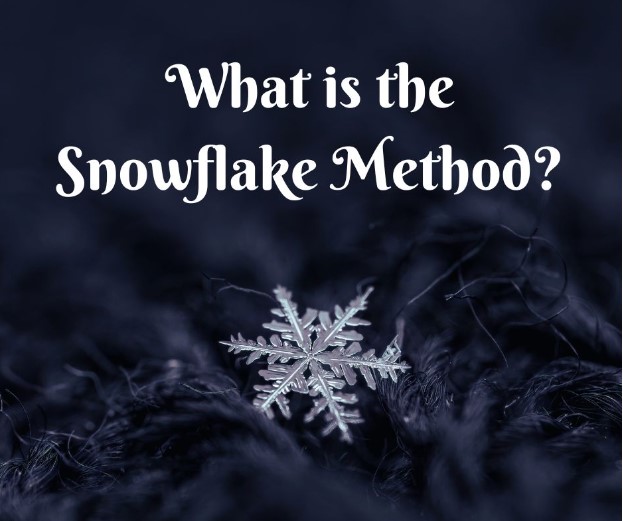The Snowflake Method is an excellent place to start if you want to improve your novel-writing skills beyond those attained by winging it. Novel planning is difficult, but the Snowflake Method will make it much more manageable.
As a writing strategy, the Snowflake Method recommends beginning with the most elementary concept. You then methodically add more information, such as scenes and characters.
With the Snowflake Method, writers start with a basic, profound notion that they build upon and refine over time. That is to say, you develop a single line into a novel by gradually adding more and more detail to the original concept.
Author and writing instructor Randy Ingermanson developed the snowflake method to write a novel from scratch. The process involves developing a general plot outline then filling it in with more specific details.
One Sentence Summary
Start by summarizing your whole novel in a single statement. Your theme or central idea will serve as the basis for this sentence.
Your novel’s central concept will serve as the inspiration for this exercise. In order to make this one sentence as concise as possible, generalizations should be avoided. Rather than remembering a character’s name, it’s more helpful to keep in mind what that character is working toward.
Expand
The next step is to expand the sentence to a paragraph describing the story narrative, any major events, and the ending
This is where you will introduce your major plot points. If you are imagining the snowflake metaphor, this is when the triangle turns into a star. Building off the details in your one-sentence summary, add a few elements here and there until you have retold your story in five sentences.
Main Character Summary
This is where you identify all the major characters in your book, give them names and spend an hour identifying their motivations, goals, and conflict.
Character development is an essential element of your novel and any time invested now will pay off in the future.
Using the one-paragraph outline you have created as a foundation, start digging into the lives of the important players in your story.
- What are some of their defining features?
- Whose perspective are we getting from whom?
- In what ways will they contribute to the overarching story?
Character Profile
You may move on to crafting summaries for each of your main characters. This requires summarizing the story arcs of all the novel’s protagonists and antagonists. When writing in plot-heavy genres like mystery or suspense, this is one of the most helpful aspects of the snowflake approach. When deciding if a story succeeds or fails, much depends on the information a character has available at any particular time.
In order to give your snowflake even more depth, you should now expand upon those summaries to create full characters. Take a look at the personalities you just sketched loosely and ask:
- Who among these will play the lead role?
- When it comes to their lives and histories, what do we know about them?
- How do the characters’ motivations, internal struggles, and transformative moments all work together to propel them forward toward their goals?
- What do they resemble, exactly? When you hear them speak, what are their affectations?
Sentence to a Paragraph
A central story idea, a multi-act framework, character names, and different character profiles have all been developed using the snowflake process. It’s time to put these pieces together in a concise four-page overview.
As you condense the entire narrative into a few pages, it’s important to make a detailed list of the scenes, the characters in those scenes, and the events that will take place in each one.
You must always keep in mind that the story’s climax is the culmination of all the events that have come before it. Even if the story is fantastic up until the last page, readers won’t remember it.



